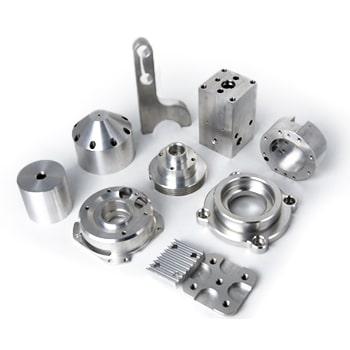CNC (Computer Numerical Control) machining of stainless steel offers several benefits and also comes with its own set of challenges. Here are some of the key advantages and challenges:
Benefits of CNC Machining Stainless Steel:
- Precision and Accuracy: CNC machines are known for their exceptional precision and accuracy. This is particularly important when working with stainless steel, which often requires tight tolerances. CNC machining ensures consistent, high-quality results.
- Versatility: CNC machining can be used to create a wide range of complex shapes and components from stainless steel, including intricate designs that may be difficult to achieve through other manufacturing processes.
- High Productivity: CNC machines are capable of running 24/7 with minimal human intervention. This high level of automation and efficiency can lead to increased productivity, especially for large production runs.
- Repeatability: CNC programs can be saved and reused, allowing for the precise replication of parts. This is essential for industries where consistent quality and interchangeability of parts are required.
- Material Efficiency: CNC machining minimizes material waste by cutting parts with minimal margins and optimizing nesting arrangements. This can help reduce material costs.
- Surface Finish: CNC machining can produce a high-quality surface finish on stainless steel parts, reducing the need for additional finishing processes.
Challenges of CNC Machining Stainless Steel:
- Tool Wear: Stainless steel is a hard and abrasive material, which can lead to accelerated tool wear. This increases maintenance costs and can affect the quality of the finished parts. High-speed steel (HSS) or carbide tooling is often required.
- Heat Generation: Cutting stainless steel generates a significant amount of heat. This can lead to thermal expansion and distortion of the workpiece, affecting dimensional accuracy. Coolant and cutting strategies must be carefully managed to mitigate this.
- Machining Speed: Stainless steel is typically machined at slower speeds compared to softer materials. This can impact production efficiency, especially for large quantities.
- Chip Control: Stainless steel tends to form long, stringy chips that can create problems, such as clogging the machine or causing tool breakage. Proper chip evacuation systems are crucial.
- Cost of Equipment and Maintenance: CNC machines and tooling for machining stainless steel can be expensive. Additionally, maintenance costs for tool replacement and machine upkeep can add to the overall production costs.
- Expertise Required: Machining stainless steel effectively requires a high level of expertise in tool selection, cutting parameters, and machine setup. Skilled operators and programmers are essential for achieving optimal results.
- Environmental Considerations: The use of coolants and the disposal of stainless steel waste can pose environmental challenges. Proper disposal and recycling practices are necessary.
In summary, CNC machining of stainless steel offers precision, versatility, and efficiency, but it also presents challenges related to tool wear, heat generation, and material characteristics. Overcoming these challenges often requires specialized equipment and skilled personnel.
Xielifeng Tech is a reliable supplier of CNC machining service from China. If you have projects to quote, just feel free to contact the company. You will get the quote within 24 hours generally.





